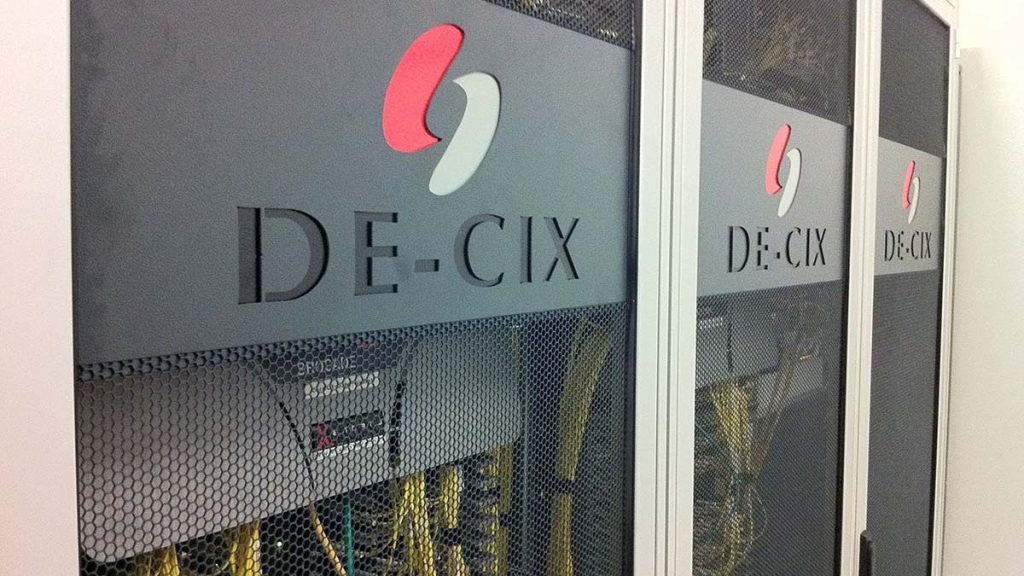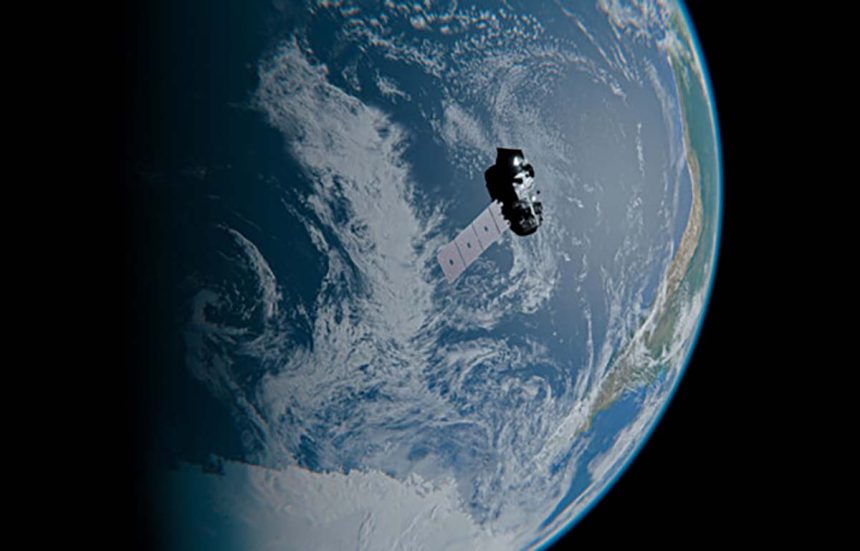By 2025, over 5.5 billion people and 31 billion devices are connected to the internet. Video dominates online traffic, while artificial intelligence (AI) reshapes how we search for information. In this fast-changing scenario, DE-CIX, the world’s largest Internet Exchange (IX) operator, reports that global traffic keeps expanding: its own exchange points handled 68 exabytes in 2024, a 15% increase over the previous year.
At the same time, generative AI is transforming the way we interact with data, and low-Earth-orbit (LEO) satellites are beginning to deliver connectivity to remote regions. Taking a step further, DE-CIX is extending its interconnection vision beyond terrestrial borders. Through its Space-IX initiative, the company is preparing for a future where the first Internet Exchange could exist in orbit.
Just as DE-CIX currently connects more than 4,000 networks across 60+ terrestrial IX locations, Space-IX aims to extend this capacity to LEO satellite constellations and other space assets — enabling them to interconnect both with each other and with Earth-based digital ecosystems. “Wherever networks are created, there must be interconnection,” says Ivo Ivanov, CEO of DE-CIX.
We’ve spent 30 years building the backbone of the internet here on Earth. Now we’re taking that same high-performance, neutral interconnection model to the next layer of digital infrastructure, above the clouds and into space.
Ivo Ivanov, CEO of DE-CIX
Research and technical challenges
To turn the Space-IX concept into reality, DE-CIX is collaborating with the German Aerospace Center (DLR) as part of the European Space Agency’s Ofelias project, researching innovative ways to optimize communications with LEO satellites.
According to Darwin da Costa, Business Development Manager for Southern Europe, Africa and Latin America, the project aims to determine how information and data can be transmitted more reliably between space and Earth using laser links. The goal is to develop by July 2026 new protocols, algorithms, and procedures to intelligently optimize network utilization between ground stations and satellites, reducing issues caused by atmospheric turbulence and cloud blockage.
“Although lasers enable higher bandwidth and data rates, they are also more sensitive to clouds, fog, and rain than conventional radio transmissions,” notes da Costa.
While Ofelias focuses on optimizing data flow between satellites and ground stations, DE-CIX’s broader Space-IX initiative explores how to interconnect space infrastructure at scale, laying the foundation for the world’s first in-orbit internet exchange point.
“As satellites become part of the digital supply chain, providing broadband to underserved communities, powering AI for businesses, or enabling in-orbit analytics, we need an architecture that unites space and Earth into an integrated ecosystem. This collaboration marks the beginning of our response to that challenge,” adds Ivanov.
Economic and geopolitical impacts
From global broadband and IoT to remote sensing and AI, the space economy is projected to reach US$ 1.8 trillion by 2035. DE-CIX argues that orbital networks must not evolve in isolation but rather be intelligently interconnected with terrestrial networks, content providers, and cloud platforms.
Industries such as logistics, defense, agriculture, and mobility, especially those operating in remote or mobile environments, are likely to benefit first. “Space-IX will enable real-time data exchange for autonomous systems, remote sensing, and distributed operations,” highlights da Costa.
In geopolitical terms, Space-IX introduces new dimensions to digital sovereignty, as questions arise around jurisdiction, data governance, and control of in-orbit infrastructure. “As nations and corporations expand their presence in space, debates will move from terrestrial borders to orbital ones, making interconnection not only a technical matter but also a strategic tool,” predicts da Costa.
With its continental scale and reliance on satellites to reach remote areas, Brazil stands out as a direct beneficiary. Integrating LEO networks with terrestrial IXs could enhance speed, extend broadband to isolated regions, and strengthen mobile networks via satellite backhaul – the segment connecting access systems to the network core. DE-CIX also expects this to improve resilience in natural disasters and expand access to digital health and education services.

Artificial intelligence is pressuring the network
The popularization of generative AI and the explosion of real-time inference applications – such as robotics, autonomous systems, and finance – are reshaping infrastructure demand. Distributed processing requires ultra-low latency and massive bandwidth.
To address this pressure, DE-CIX launched AI-IX, the world’s first Internet Exchange designed for AI workloads. The platform includes proprietary multi-agent routing, GPU-as-a-service integration, and readiness for the Ultra Ethernet protocol, supporting distributed AI training.
If today’s internet already depends on IXs to be fast, secure, and scalable, the internet of the future may rely on similar structures, only in orbit. As Ivanov summarizes: “Space is rapidly becoming the next digital frontier”.
Learn more
Founded in 1995, DE-CIX celebrates its 30th anniversary with a presence in over 60 locations across Europe, Africa, North America, South America, the Middle East, and Asia. Accessible from data centers in more than 600 cities worldwide, DE-CIX interconnects thousands of network operators, ISPs, content providers, and enterprise networks in over 100 countries – offering peering, cloud connectivity, and AI interconnection services.
The company is part of an innovation ecosystem that has turned Frankfurt into a global interconnection hub. A study by the Dstream Group found that the city hosts unmatched interconnection density, with DE-CIX Frankfurt ranking as Europe’s largest exchange point. Frankfurt counts more than 100 data centers and 20 IXs, totaling nearly 4,000 network interconnections at speeds exceeding 200 terabits per second.
Frankfurt’s strategic location in the heart of Europe, combined with its financial-center legacy, has made it a magnet for ISPs, cloud providers, and enterprises seeking fast, powerful connectivity. DE-CIX’s presence has fueled this growth, turning Frankfurt into the epicenter of global interconnection.







